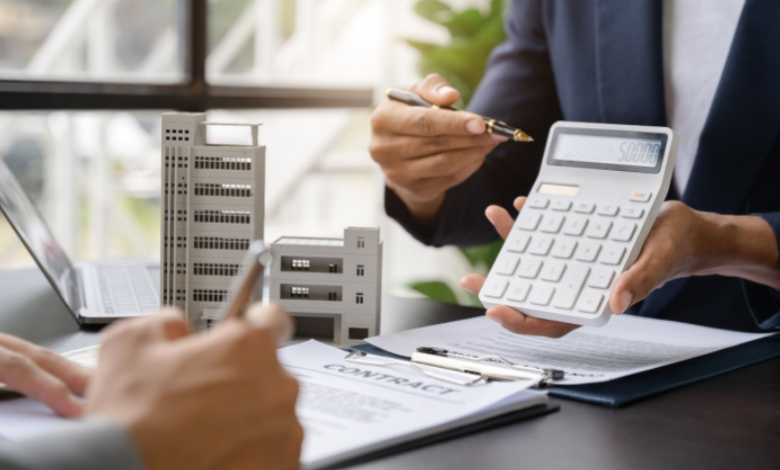How to Audit Your Commercial Property Insurance Coverage Before Disaster Strikes

No one expects a fire, flood, or break-in to happen to their business — until it does. Unfortunately, many Australian business owners only discover gaps in their insurance when it’s too late. A regular audit of your commercial property insurance coverage can mean the difference between a temporary setback and a full-scale financial crisis.
Commercial properties, whether owned or leased, are exposed to countless risks. From natural disasters to theft or equipment breakdown, the right insurance ensures you can rebuild, replace, and resume operations quickly. But having a policy isn’t enough — you need to be certain it actually covers what matters most.
This guide will help you assess whether your policy is up to date, comprehensive, and tailored to your industry’s unique needs.
1. Know What’s Included — and What’s Not
Start by reading your current insurance policy carefully. Many business owners assume that property insurance automatically covers every possible scenario, but exclusions are common.
Typically, a good policy covers fire and smoke damage, storms, floods, hail, theft, vandalism, water damage from burst pipes, accidental or malicious damage, and business interruption due to insured events.
However, you should check for exclusions such as wear and tear, gradual deterioration, faulty workmanship, or pest damage. If any of these exclusions could affect your operations, talk to your insurer about additional coverage options.
2. Check Your Building and Contents Values
Underinsurance is one of the most common — and costly — mistakes in commercial property coverage. Businesses often underestimate the cost of rebuilding or replacing assets after a disaster.
Your policy’s “sum insured” should reflect the full replacement cost, not the current market value. Building costs, construction materials, and machinery prices have all increased in recent years, which means your existing coverage might be outdated.
It’s wise to review property and asset valuations every 12 months. If you’ve renovated, expanded, or purchased new equipment, your coverage should grow accordingly. An outdated policy can leave you paying thousands in unexpected repair or replacement costs.
See also: Top 10 Portable Monitors for Business Presentations
3. Evaluate Your Business Interruption Coverage
Even if your property is fully insured, how will your business survive during downtime? Business interruption coverage helps you recover lost income and cover ongoing expenses while your property is being repaired or rebuilt.
When auditing your policy, ask whether it covers temporary relocation costs, employee wages, and how long the indemnity period lasts. A short indemnity period might not provide enough time to resume operations, especially after major events like floods or fires. Choosing an adequate period — typically 6 to 12 months — ensures financial stability while you rebuild.
4. Confirm Coverage for Equipment and Machinery
For many industries, machinery and electronic equipment are the lifeblood of daily operations. From manufacturing lines to POS systems, equipment breakdown can halt production instantly.
Check whether your commercial property policy includes mechanical and electrical breakdown coverage. If not, consider adding it. This type of protection helps pay for repairs or replacements due to sudden malfunctions, power surges, or operator errors.
Even small components, like refrigeration units or data servers, can cost thousands to replace — and may not be covered under a standard property policy.
5. Review Coverage for Natural Disasters
Australia’s climate can be unpredictable, with bushfires, storms, and floods posing serious risks to commercial properties. Not all policies automatically include these events, so it’s crucial to verify coverage.
If you operate in high-risk zones such as coastal regions, bushfire-prone areas, or floodplains, confirm that your policy includes bushfire and smoke damage, flood and storm surge protection, and hail or windstorm damage.
If these aren’t included, request a quote for extended coverage. It’s far more affordable to pay a small increase in premium than to fund an entire rebuild out of pocket after a natural disaster.
6. Audit Your Tenancy and Lease Agreements
If you lease your business premises, your landlord’s insurance may only cover the building’s structure — not your contents, signage, or fixtures. You’ll need your own policy to protect your property and equipment.
Review your lease agreement to understand what you’re responsible for. Many tenants mistakenly assume the landlord’s insurance extends to their stock or furniture, only to learn otherwise after damage occurs.
For property owners who lease space to others, make sure you’re adequately covered for liability, damage by tenants, and loss of rent. Clear communication between both parties prevents disputes during a claim.
7. Consider Coverage for Theft and Vandalism
Theft and vandalism remain among the most common commercial claims. Even with CCTV and alarms, businesses face losses from break-ins, stolen tools, and malicious damage.
Ensure your policy includes coverage for stolen equipment and stock, broken locks or windows, and graffiti or deliberate damage. If your business uses portable tools or laptops off-site, ask your insurer about portable contents coverage so your assets are protected even when they’re not on your main premises.
8. Assess Your Policy’s Flexibility and Customization
A one-size-fits-all insurance plan rarely works for every business. Each industry has unique risks. Retailers may need protection for glass, signage, and refrigeration units. Manufacturers should focus on machinery, stock, and fire hazards. Construction companies require portable tools and transit coverage. Offices benefit from protection for computers and electronic data.
When auditing your policy, make sure it aligns with your operations. If your insurer offers custom add-ons or extensions, consider tailoring your policy to fill any gaps.
9. Verify Your Policy for Insurance Compliance
Some lenders, landlords, and contracts require proof of specific insurance levels before doing business. Failing to maintain proper coverage could breach agreements or delay projects.
Check whether your insurance for commercial buildings meets your contractual obligations. This includes coverage limits, third-party liability, and certificate of currency requirements.
An audit helps you avoid last-minute issues when providing documentation for banks, clients, or local councils.
10. Work with a Trusted Insurance Partner
Auditing your commercial property insurance doesn’t have to be complicated. Partnering with an experienced broker can save you time and ensure you’re fully protected.
Smart Business Insurance helps Australian business owners compare, customize, and update their property coverage to match their industry risks. Their brokers understand that no two businesses are alike — they take the time to review every policy detail, explain exclusions, and recommend adjustments before it’s too late.
Having an expert on your side ensures you’re not overpaying for features you don’t need or underinsured where it matters most.
11. Schedule Regular Policy Reviews
Once you’ve audited your coverage, make it a habit to review it annually — or whenever your business changes significantly. New locations, equipment upgrades, or expansions all affect your risk profile.
Regular reviews help keep your coverage accurate, affordable, and compliant with insurance regulations. Don’t wait for a claim to discover what’s missing.
Final Thoughts
Disasters don’t come with warnings. A single fire, storm, or break-in can cost hundreds of thousands in repairs and lost revenue — and without proper insurance, recovery can take years.
By proactively auditing your commercial property insurance coverage, you ensure that every building, asset, and income stream is fully protected. The key is staying informed, updating your policy regularly, and working with professionals who understand your business.
With the right insurance for commercial buildings, you won’t just recover faster after a disaster — you’ll have the confidence to keep growing, knowing your business is built on a strong foundation of protection.



